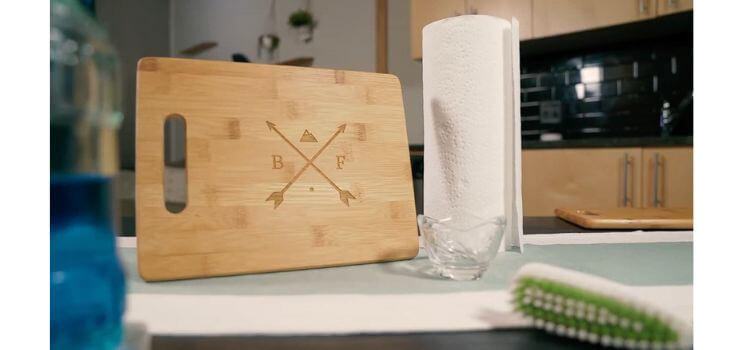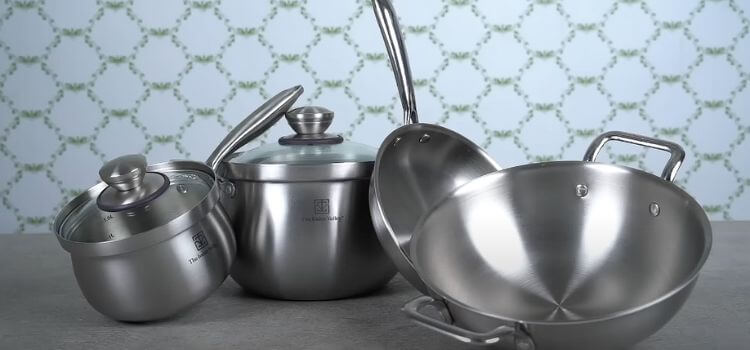Every kitchen has its star tools, but one that has been gaining popularity for its versatility and precision is the petty knife. This often-overlooked kitchen essential is a must-have for anyone looking to make food preparation smoother and more efficient.
Whether you’re a professional chef or a home cook, understanding the different types of knives can elevate your cooking experience. This article will explore what a petty knife is, its uses, and why it has become an essential tool for many kitchens around the world.
What is a Petty Knife?
A petty knife is a small, versatile kitchen knife that bridges the gap between a paring knife and a chef’s knife. Its name originates from the French word “petit,” which means small, reflecting its size and design.
Unlike larger kitchen knives, which can sometimes be cumbersome for delicate tasks, the petty knife is compact yet effective.
Key Features of a Petty Knife
The most distinguishing feature of a petty knife is its blade length, which typically ranges from 5 to 7 inches. This size allows it to perform tasks that are too small for a chef’s knife but too large for a paring knife.
The blade has a pointed tip and a slightly curved edge, which helps in making detailed cuts with ease. Unlike larger knives, the petty knife’s narrow blade allows it to maneuver through food easily, offering precision without compromising speed.
The design of a petty knife makes it versatile. It combines the attributes of a paring knife, which is great for detailed tasks, with those of a chef’s knife, which excels at slicing and chopping.
This versatility is why it is sometimes referred to as a utility knife. The materials used in petty knives vary, with stainless steel and carbon steel being the most common.
Ergonomics play a crucial role in the design of a petty knife. A well-balanced handle ensures that the knife feels comfortable in hand, making it easier to control.
This is particularly important for tasks that require precision, as an awkward grip can lead to mistakes and accidents. The petty knife’s lightweight build allows for extended use without straining the wrist, making it ideal for tasks that need more time and focus.
What is a Petty Knife Used For?
The petty knife is the ideal tool for tasks that require precision cutting. Unlike larger knives, which can be difficult to control when making intricate cuts, the petty knife’s smaller size and design allow for greater accuracy.
It excels at tasks such as peeling, trimming, and slicing small ingredients. For example, if you need to peel a piece of fruit, slice garlic, or trim herbs, the petty knife offers the control and precision you need without having to switch to a paring knife.
Another area where the petty knife shines is in slicing fruits and vegetables. It is perfect for cutting smaller items like strawberries, cucumbers, and other produce that require detailed, careful cuts.
Because of its narrow blade, it can easily slice through foods without crushing them, preserving their texture and appearance. This makes it particularly useful for preparing garnishes or for recipes that require finely chopped ingredients.
The petty knife is also effective for handling small cuts of meat and seafood. Whether you’re slicing small pieces of chicken, trimming fat, or filleting a fish, the petty knife offers the precision and control needed to get the job done.
It can be used to cut delicate pieces of fish without tearing the flesh, making it a versatile tool for those who prepare seafood dishes frequently. Additionally, it is ideal for creating garnishes from vegetables or fruits, allowing for delicate slicing that would be difficult to achieve with a larger knife.
Benefits of Using a Petty Knife
One of the primary benefits of a petty knife is its versatility. It combines the best features of a paring knife and a chef’s knife, making it useful for various tasks. Unlike other specialized knives that can only be used for a few specific tasks, the petty knife is adaptable.
Whether you need to peel, slice, or chop, the petty knife can handle it all. This versatility means that you won’t need to switch between different tools as often, which can save you time during meal prep.
Another benefit of the petty knife is its ease of handling. Its lightweight and balanced design make it comfortable to use, reducing the risk of hand fatigue, especially during tasks that require precision.
This makes it ideal for cooks who spend long hours in the kitchen and need a tool that can keep up with their pace. The petty knife’s design also allows for more delicate cuts, giving you the precision you need for tasks like garnishing or fine slicing.
The petty knife’s compact size makes it a space-saving option for those with smaller kitchens. If you have limited space and need to prioritize which tools to keep on hand, the petty knife is an excellent choice because it can perform a variety of tasks. Additionally, because it is smaller than a cook’s knife and chef’s knife, it can be easier to store in drawers or on a magnetic knife strip.
Another aspect that makes the petty knife efficient is how quickly it can handle tasks that would otherwise require larger, bulkier knives. Its design allows for fast, smooth cuts, making food prep quicker and easier. If you’re someone who enjoys cooking but wants to make the process more streamlined, a petty knife is a tool worth considering.
Why Choose a Petty Knife Over Other Knives?
When deciding whether to add a petty knife to your kitchen arsenal, it’s essential to consider how it compares to other knives. Unlike a chef’s knife, which can be cumbersome for smaller, more detailed tasks, the petty knife is more precise and easier to handle. Its lighter weight and smaller size mean that it’s ideal for tasks that require dexterity and control, like slicing small fruits or peeling vegetables. While a chef’s knife is excellent for chopping large quantities of food, the petty knife offers more finesse.
Compared to a paring knife, the petty knife’s slightly larger blade provides more flexibility. Paring knives are great for tasks like peeling and trimming, but they can be too small for slicing tasks.
The petty knife bridges this gap by offering the control of a paring knife with the added length needed for slicing. This makes it more versatile than a standard paring knife, as it can handle a broader range of tasks without sacrificing precision.
The petty knife also has an advantage over utility knives. While utility knives are designed to be versatile, they often lack the finesse and control that a petty knife offers. The petty knife’s narrower, more precise blade allows for more delicate cuts, making it the better choice for tasks that require accuracy. It is also easier to maneuver, which means you can make quick, precise cuts without having to worry about accidentally overcutting.
Types of Petty Knives
Western-Style Petty Knives: These knives tend to have a heavier, more robust design, making them ideal for tasks that require more strength and durability. They are versatile and can handle a wide range of kitchen tasks.
Japanese-Style Petty Knives: Known for being lighter, sharper, and often more refined, Japanese-style petty knives offer precision and ease of use. They are typically crafted with a sharper edge, perfect for delicate tasks like slicing fruits or herbs.
Double Bevel vs. Single Bevel: Petty knives can come with either a double bevel, which is sharpened on both sides and offers versatility for both right- and left-handed users, or a single bevel, which provides more precise cutting but is often designed for right-handed users. Choose the bevel style based on your cutting needs and hand preference.
Notable Brands: Some popular brands known for their high-quality petty knives include Shun, Wüsthof, Miyabi, and Global. These brands offer a range of options that cater to different preferences and budgets.
How to Choose the Perfect Petty Knife
Blade Material: Stainless Steel vs. Carbon Steel
When choosing a petty knife, the type of blade material plays a vital role. Stainless steel is known for its rust and corrosion resistance, making it a low-maintenance option perfect for daily kitchen tasks. It holds its sharpness well and is easy to clean.
In contrast, carbon steel provides exceptional sharpness and excellent edge retention but demands more attention to avoid rust and staining. Opt for carbon steel if you desire a knife that stays extremely sharp, but be ready for regular upkeep.
Size & Weight
Petty knives generally range from 5 to 7 inches in length, and selecting the right size depends on your intended use.
Blades on the shorter side (around 5 inches) are great for precise tasks like peeling or trimming, while longer blades (7 inches) offer greater versatility for slicing fruits, vegetables, and smaller cuts of meat.
Additionally, consider the weight—a lighter knife allows for greater maneuverability, while a slightly heavier one can provide enhanced control.
Handle Design & Comfort: The Importance of a Good Grip
Having a comfortable grip is crucial for maintaining control and accuracy. Seek out a handle that fits well in your hand and features a design that minimizes slipping, particularly when wet.
Ergonomically shaped handles promote a natural grip, helping to reduce fatigue during extended use. Handles can be crafted from a variety of materials, including wood, plastic, and composite options, each offering its own unique feel and durability.
Price vs. Quality: Balancing Budget and Performance
Petty knives come in a range of prices, from budget to premium. Budget knives can be a good starting point, but they may not offer the same sharpness or durability as mid-range or high-end options.
Mid-range knives (around $50) usually provide a balance of quality and affordability, featuring better materials and construction.
Premium knives can cost $60 and up, offering top-notch craftsmanship, superior balance, and long-lasting sharpness. Consider your budget and how often you plan to use the knife before making a choice.
Where to Buy: Reliable Stores to Purchase a Petty Knife
To ensure you get a quality petty knife, buy from reliable stores. Trusted online retailers like Amazon, Williams Sonoma, and Japanese Knife Imports have a wide selection and customer reviews to guide your purchase. If you prefer buying in person, visit specialty kitchenware stores where you can physically inspect and hold the knife to test its comfort and weight.
Proper Care and Maintenance of a Petty Knife
To ensure that your petty knife lasts as long as possible, it’s important to follow proper care and maintenance guidelines.
After each use, clean the knife with warm water and mild soap, then dry it immediately to prevent rusting. Avoid using abrasive sponges or harsh detergents, as they can damage the blade.
Proper storage is also crucial. Keep your knife in a knife block, on a magnetic strip, or in a protective sheath to prevent it from dulling or getting damaged.
Sharpening your petty knife regularly is essential for maintaining its sharpness. Depending on the material of the blade, you may need to sharpen it more or less frequently.
Stainless steel knives may require less frequent sharpening, while carbon steel knives might need more attention. Use a whetstone or a professional sharpening service to maintain a razor-sharp edge.
Conclusion
The petty knife is an incredibly versatile kitchen tool that offers precision, efficiency, and ease of use. Whether you’re slicing fruit, trimming meat, or preparing garnishes, this compact knife can handle a wide range of tasks, making it a must-have for any kitchen.
ts combination of features from both paring and chef’s knives allows it to fill a unique role in the culinary world, offering a perfect blend of precision and functionality.

